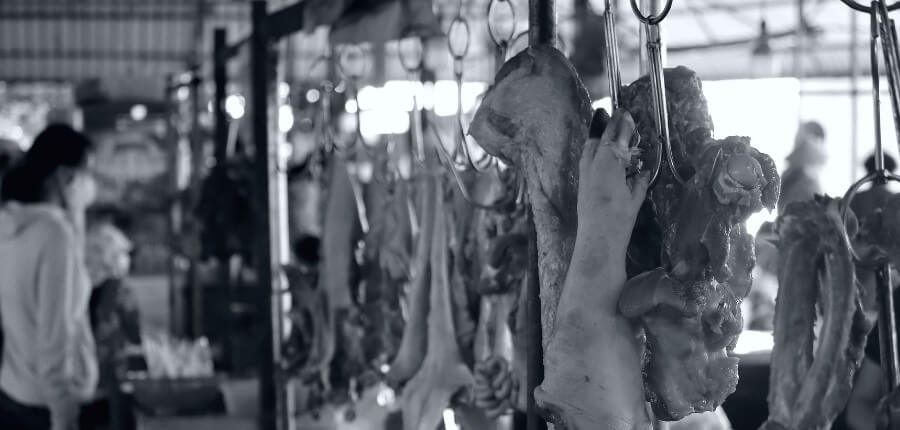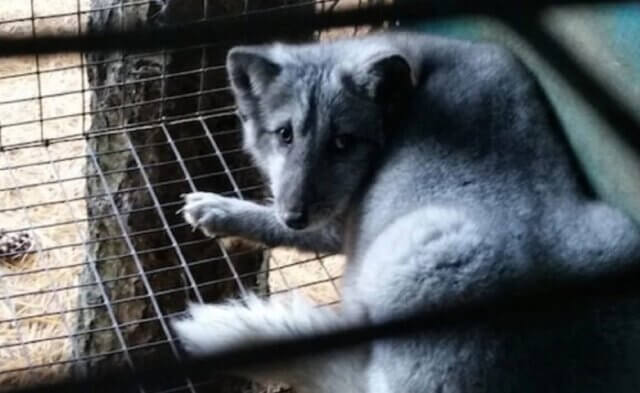COVID-19. Swine flu. Bird flu. SARS. MERS. Ebola. Creutzfeldt-Jakob (mad cow) disease. Hoof-and-mouth disease.
The number of emerging dangerous infectious diseases has increased significantly in recent decades. The Centers for Disease Control and Prevention estimates that approximately 75% of new infectious diseases affecting humans originated in animals. But animals aren’t to blame for outbreaks of animal-borne, or “zoonotic,” diseases — humans are.
Many animal-borne diseases exist largely because humans don’t leave animals in peace. Instead, we crowd them together on filthy factory farms — breeding grounds for pathogens — in order to satisfy our voracious meat habit.
Unless we find the status quo satisfactory, we can’t continue to ignore what we are allowing to happen and the link between meat and outbreaks of zoonotic diseases. Health experts report that COVID-19 originated in a Chinese “wet market” that sold fish, live poultry and exotic animals, like the gentle pangolin, for human consumption. Cages at these markets are typically stacked on top of each other, and animals at the bottom are invariably soaked with excrement, pus and blood, providing ideal conditions for viruses to spread from one animal to another — and to humans who touch them or step in the ooze.
While it’s easy to point the finger at China, there are disease-ridden animal factories here in the U.S. that officials have warned, time and again, also pose major health risks. They are like volcanos that could erupt at any time. More than 80 live-animal markets and slaughterhouses operate in New York City alone, and San Francisco and Los Angeles are awash in them. But beyond live-animal markets, the enormous demand for chicken, pork, beef and other animal flesh means that animals must be mass-produced in crowded, feces-ridden farms, travel in filthy trucks and be slaughtered on killing floors that are covered with bodily fluids and dangerous pathogens.
In 2009, hundreds of sick pigs died in a massive pig operation in Mexico, just before the swine flu outbreak spread to the U.S. and resulted in more than 274,300 hospitalizations and 12,400 deaths. The outbreak, as USA Today recently pointed out, stemmed from the pig populations of both countries. And some historians suspect that the virus associated with the 1918 flu pandemic — also known as the Spanish flu — originated at a chicken farm in Kansas.
Bird flu spreads easily on chicken farms so crowded that they make a subway car during rush hour in Tokyo look roomy. There are at least 144 different strains of bird flu, including the H5N1 variety, which kills the most birds and about 60% of humans who catch it. And as if we didn’t have enough to worry about with COVID-19, bird flu was recently discovered on a poultry farm in Germany, as well as being identified in the Philippines, India, Ireland, England and some other countries.
PETA recently sent a letter — and launched an international petition — to the World Health Organization, urging it to call for the permanent closure of all live-animal markets. Animal markets were banned in China after the SARS outbreak, which also originated in such a market, but they were reopened in 2003. We see where that’s gotten us.
While some live-animal markets in China have been closed again, at least temporarily, many such pockets of disease continue to operate throughout Asia, Africa, Europe and the U.S. Regardless of the country it takes place in, raising and killing animals for food threatens human health and causes tremendous animal suffering. It’s not only time to end live markets, but also to take responsibility, to get away from consuming animals and their “products.” It is safer, kinder and better for the environment for all of us to eat vegan — not just now but also after the COVID-19 pandemic subsides.
Let’s all do our best to stay healthy by avoiding animal-derived foods like the plague.





